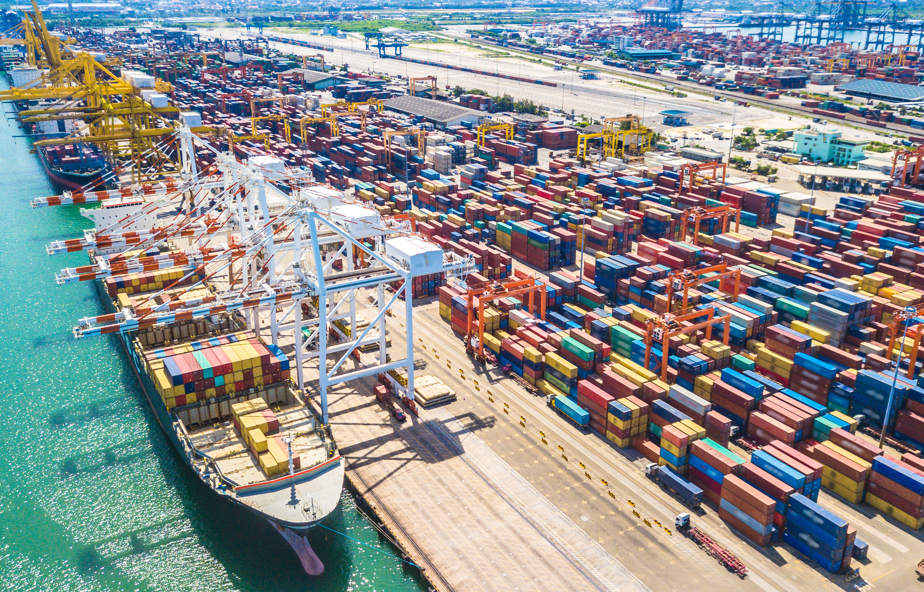The global cargo industry is going through some major changes, and not all of them are smooth sailing. From geopolitical tensions to economic shifts, evolving trade routes, and unpredictable tariffs, businesses are having to stay on their toes. In our recent Cargo Masterclass webinar, NTI’s National Product Manager - Cargo & Carriers Nick Aiello broke down what’s happening in global shipping right now and what it means for businesses and the broader shipping industry.
Trade Turmoil: Conflict, Pirates, and Reroutes
Political instability continues to disrupt global cargo movements, with major players in the shipping industry adjusting routes to mitigate risks. "The Red Sea remains a major risk zone," Aiello explained, citing ongoing Houthi attacks on cargo vessels. "While a temporary ceasefire is currently in place, tensions remain high and major shipping lines have not returned to the Red Sea and Suez Canal." Many companies have chosen to reroute vessels around the Cape of Good Hope in South Africa – a decision that adds approximately three weeks to voyages and significantly increases shipping costs.
Piracy is another concern. “Piracy incidents have surged to levels not seen since 2008” Aiello noted, citing attacks off the coast of Africa. These growing threats make it even more critical for businesses to review their shipping routes and supply chain strategies.
To navigate these uncertainties, businesses are adapting by diversifying supply chains and leveraging new trade routes. Aiello explained “As Insurance Providers and Brokers, we need to understand the shifting landscape impacting our clients to gauge the appropriateness of coverage.
Tariff Tensions: Winners, Losers, and Strategy Shifts
Tariffs have dominated the headlines in recent times, especially with the shifting U.S. trade policies. "The U.S. has introduced new tariffs targeting imports from China, Mexico, and Canada," Aiello pointed out. "They have also introduced a new ‘reciprocal tariffs’ policy, which could escalate into a trade war, creating further uncertainty in global markets.
For Australian exporters, this presents both obstacles and opportunities. "For Australian exporters, these tariffs could lead to lower demand from US buyers as they search for cheaper, locally manufactured alternatives,” Aiello noted. At the same time, new avenues may open elsewhere “Australian businesses may need to identify new trade partnerships to mitigate potential lost markets.”
Insurance providers are also keeping a close watch. "New trade partnerships can introduce new and/or different exposures,” Aiello explained. “It’s about [Insurance providers, brokers and customers] working together to ensure coverage aligns with emerging risks that arise in unfamiliar markets.”
Economic Waves: Freight, Currency, and Inflation
Shifts across the economy are another major factor impacting global cargo. "Freight rates have been dropping since December 2024 highs," Aiello said. This is good news for businesses trading internationally as lower freight rates mean reduce costs to ship goods, but the picture remains volatile due to the trade tensions raised above.
Currency fluctuations are also in the mix. “We have seen the AUD weaken from 0.69 US cents in September 2024 to 0.63 US cents today” Aiello explained, “When the AUD is strong it increases Australian importers buying power, while a Weak AUD makes it more cost effective for foreign countries [and businesses] to purchase Australian-manufactured goods.” It’s crucial to review policy limits and estimated annual sendings if customers are trading internationally as these significant currency fluctuations could cause policy limits to require revision in times of rapid fluctuations, leaving insureds potentially underinsured.
He also noted that interest rates and inflation continue to shape consumer confidence: “CPI inflation has continued to drop from the highs of December 2022 leading to the RBA’s first interest rate cut. These lowering inflation and interest rates should boost consumer confidence and lead to increased capital available for spending.”
Staying Afloat: Smart Moves for Businesses
So, how can businesses stay ahead of all this change? Aiello had a few key recommendations:
- Regular Policy Reviews: “For Insurance providers and brokers, the changes reinforce the need for regular policy reviews.” “It is timely to review Insured’s estimated annual sendings, and policy limits, ensuring adequate protection is in place.”
- Keep watch on trade policies and shifting trade routes: Tariffs and conflicts can drastically impact trade partnerships and the timeliness and availability of goods. Reassessing supply chains and focusing on Just in Case ordering can build resilience to these rapidly shifting forces.
- New markets can open new exposures: The port and inland infrastructures in countries can vary significantly. Delays, theft and damage can be a higher exposure in unfamiliar countries. Firm understanding of Sanctions regimes is also crucial.
- Ongoing Education: “We need to understand the shifting landscape impacting our customers,” Aiello said, emphasising communication around trade and operations to understand developments and potential implications.
What’s Next? The Future of Global Cargo
As the supply chain and logistics space continue to evolve, businesses that are adaptive and remain flexible will be best positioned for success. "We’re seeing constant shifts in trade policies, logistics technology is advancing, and sustainability is becoming a bigger focus," Aiello concluded. "While there are challenges, there are also big opportunities for businesses that are able and willing to adapt."
His final takeaway? "Shipping is complex, and the world is changing fast. But with the right strategies, businesses can navigate these challenges and come out ahead."
If you’re a broker looking to guide your clients for success in these shifting markets, get in touch with NTI. Our national team of specialists are here to help tailor coverage that meets your customers’ needs—so they can move forward with confidence, no matter what the world of trade brings next.
